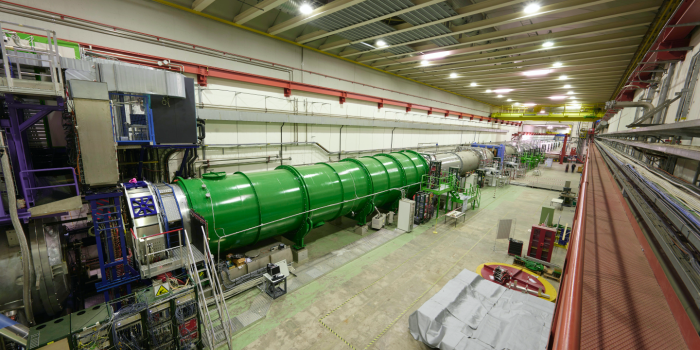In a recent discovery, researchers at CERN have observed an extremely rare particle decay that hints at the possibility of new physics beyond the Standard Model (SM).
The particle decay is extraordinarily rare. As predicted by the Standard Model, less than one in every 10 billion kaons undergoes this particular decay. “This particular decay is extremely well predicted in the Standard Model,” explains Cristina Lazzeroni, Professor of Particle Physics at the University of Birmingham. “If we measure a deviation from the SM, it’s a clear sign of new physics.”
This makes the decay of kaons particularly intriguing to physicists, as any deviation from the SM could signal the existence of unknown particles or forces.
Kaons are produced at CERN’s Super Proton Synchrotron (SPS) by colliding high-intensity proton beams with a fixed target. This creates a stream of secondary particles, including kaons. The NA62 detector then captures and identifies the kaons, measuring their decay products, particularly charged pions. Neutrinos, which are also produced during the decay, appear as missing energy in the detector data.

“Kaons and pions are particles containing quarks,” Lazzeroni tells Interesting Engineering. Quarks come in different “flavors,” including up, down, strange, charm, beauty, and top. The rarity of this kaon decay arises from the fact that it involves a change in quark flavor, mediated by the Z boson. “This can only happen with a rather elaborate process, hence its rarity.”
In the experiment, the NA62 detector captures the charged kaon and pion, but the two neutrinos are undetectable, appearing as missing energy. “It’s ‘one particle in, one particle out, and nothing else,’” Lazzeroni says. The experiment aims to ensure no other particles are missed, as any undetected particles could lead to false background signals.
The results from this experiment are noteworthy. The rate of kaon decay into a pion and two neutrinos is measured at about 13 in every 100 billion kaons. This value is roughly 50% higher than the predictions of the Standard Model, suggesting that unknown particles might be influencing the decay process.

“At present, the NA62 measurement is still compatible with the SM (at about 2 sigma) but this discrepancy could point to new physics. It could point to the existence of new mediators, like a Z’ boson or leptoquarks,” Lazzeroni explains.
However, more data is needed to confirm or refute this potential breakthrough. The NA62 experiment continues to gather data, and researchers hope that in the future, they will either validate the presence of new physics or confirm the Standard Model’s predictions.
The findings were presented at a CERN EP seminar.


